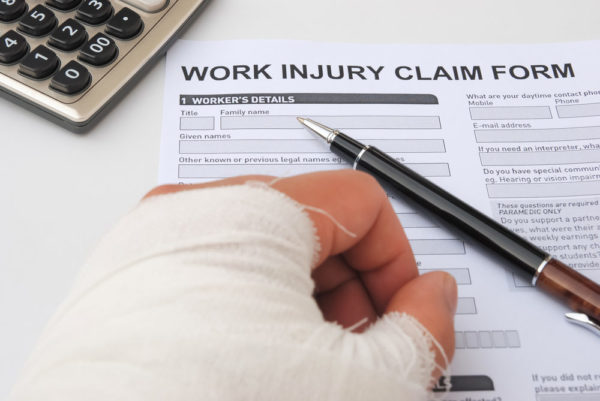Most employees have never had to file a workers’ compensation claim, but for those who need this service, it is important to know the regulations in their specific state and how to navigate the system.
Texas is the only state that does not require private employers to carry Workers Compensation insurance.
Probably the most important issue employees face is that it is typically Worker’s Compensation or nothing when they are injured on the job, either with partial or full disability, said University of Wyoming Law Professor Michael C. Duff, an expert in the field.
“The most important thing — and I used to represent employees and clerked for the Commonwealth of Massachusetts Department of Industrial Accidents — is that there is virtually no opportunity to obtain ordinary lawsuit damages when an employee suffers injury on the job. That really is important for people to understand.”
RELATED: Unemployment rules get stricter, choices harder
RELATED: Uber, Lyft drivers earn win in battle for unemployment benefits
If a machine blows up next to an employee and injures them, it does not matter how grievous the injury or how negligent the employer was, Duff said. But that does not mean an employee cannot sue the machine’s manufacturer.

History of Workers’ Compensation
The first workers’ compensation law in the United States was enacted in 1908 to cover federal civilian employees, according to the nonprofit Workers’ Compensation Research Institute.
Most states adopted similar laws between 1910 and 1920 with New Jersey and Wisconsin taking the lead.
Workers’ Compensation laws are all agreements with some common principles and similar categories for benefits, although how those benefits are delivered varies from state to state, according to the Social Security Office of Policy.
The idea behind these laws is to provide injured workers with help and to protect employers with limited liability. It does not matter whose fault it was that the injury occurred.
Whether it is disease or an occupational injury, these state programs provide for payment of lost wages, medical treatment and rehabilitation services.
“The adoption of such laws in the United States, beginning in the 1910s, has been called a significant event in the nation’s economic, legal, and political history,” according to the Social Security Office of Policy. “It was hailed at the time as the first instance of social insurance in the United States and was rapidly adopted throughout the country.”
Most Workers’ Compensation historians credit the U.S. system to Europe and to Germany, specifically. Germany had the first “Sickness and Accident Laws.” England came next in 1867.
Before such laws were adopted in the U.S., injured workers had to prove negligence to recover medical expenses, lost wages and other damages. It was standard to believe that if a worker showed up for work, they assumed the risk involved.
Workers’ Compensation changed that. And while most workers under most circumstances are now covered by these laws, there are differences that should be noted.
“When people want an explanation as to why that is, we have had this system for about a hundred years and the reason we developed it is because employees were not able to successfully bring lawsuits,” Duff said. “It is one of the first great tort reforms in Anglo-American law. Even if you wouldn’t lose in court, it would take a lot longer than going through the Works’ Comp system.”
It is a fair system for both sides, said Colette Griffin, chair of the Workers Compensation Section of the Connecticut Bar Association. She defends employers and carriers in all aspects of workers’ compensation matters.
 “Because it is a no-fault system, it can be harsh,” said Griffin, an attorney with Howd & Ludorf in Hartford. “I have had multiple people say, ‘the person shouldn’t have been doing what they were doing.’ But, if you are simply not thinking and trip and fall, it is a system that is established to create the best possible scenario to try to help people through a work-related injury. It fulfills their need to be able to survive, but at the same time, provides the employer with some limitation on those damages. There is no need for negligence or fault.”
“Because it is a no-fault system, it can be harsh,” said Griffin, an attorney with Howd & Ludorf in Hartford. “I have had multiple people say, ‘the person shouldn’t have been doing what they were doing.’ But, if you are simply not thinking and trip and fall, it is a system that is established to create the best possible scenario to try to help people through a work-related injury. It fulfills their need to be able to survive, but at the same time, provides the employer with some limitation on those damages. There is no need for negligence or fault.”
Griffin also recommends that for complex cases, at the very least, having a lawyer can be advantageous for the employee.
“It can be a process that has a lot of integral pieces to it. I think there are some people who navigate the process perfectly well, but in general, knowing the law is critical. … Having an attorney who is particularly well versed and does workers comp on a regular basis provides you with that very thorough ability to be represented.”
A study conducted by the nonprofit Workers Compensation Research Institute, based in Cambridge, Mass., is available online to help those seeking more information.
The study is built on years of work by the U.S. Department of Labor, using a set of tables to promote uniformity nationwide.
Employment and wages covered by Workers’ Compensation increased in nearly every state between 2013 and 2017 and the number of workers in the U.S. covered by Workers’ Compensation continues to grow.
Read the next article in the series: Worker’s Compensation Insurance: What is Covered









